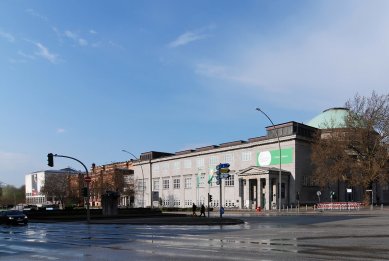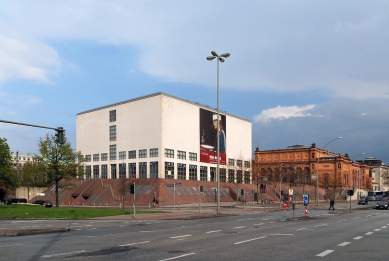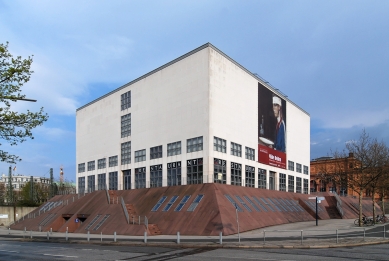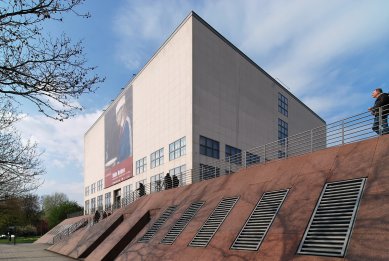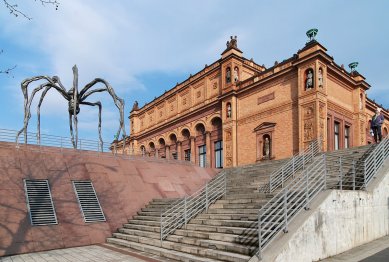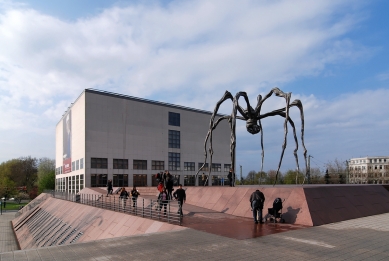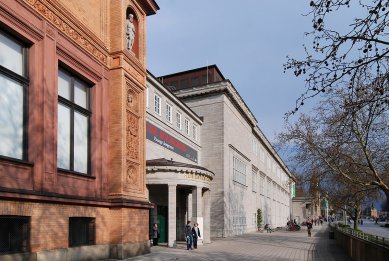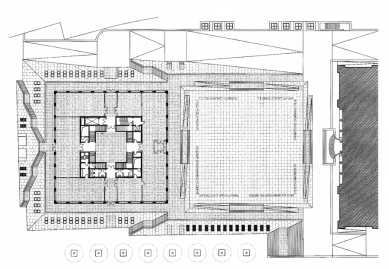
Gallery of Contemporary Art
Gallery of Contemporary Art

The Hanseatic city of Hamburg, like Berlin, boasts its 'Museum Island' designed by famous architects. However, in the case of Hamburg, the district is not washed by the Spree, but on one side, high-speed trains zoom by, while on the other side, an eight-lane road cuts off the museums from the historic center.
The Hamburg Kunsthalle was originally established between 1863-69 according to a design by Georg Theodor Schirrmacher and Hermann von der Hude for the exhibition of Hamburg paintings from the 14th century, Dutch and Flemish artists from the 16th and 17th centuries, and French and German paintings from the 19th century.
From 1914-21, a new building in the neoclassical style by Fritz Schumacher was added to the east of the main train station. In 1997, across from Lake Binnenalster, the postmodern Contemporary Art Gallery by Oswald Matthias Ungers was completed, where international art collections from Pop Art to the present are displayed. A chamfered granite pedestal is dominated by a four-story limestone block set on an elevated platform. Ungers' building takes into account the urban context. The raised square connects with the original 19th-century structure. The museum's layout meets expectations of a Kunsthalle – to offer art works the most variable options for display. Due to the different readings of the facade, each floor provides different lighting conditions for exhibiting art objects: from artificial lighting (basement and 2nd floor) to side light (ground floor and 1st floor) to skylights (3rd floor).
The Hamburg Kunsthalle was originally established between 1863-69 according to a design by Georg Theodor Schirrmacher and Hermann von der Hude for the exhibition of Hamburg paintings from the 14th century, Dutch and Flemish artists from the 16th and 17th centuries, and French and German paintings from the 19th century.
From 1914-21, a new building in the neoclassical style by Fritz Schumacher was added to the east of the main train station. In 1997, across from Lake Binnenalster, the postmodern Contemporary Art Gallery by Oswald Matthias Ungers was completed, where international art collections from Pop Art to the present are displayed. A chamfered granite pedestal is dominated by a four-story limestone block set on an elevated platform. Ungers' building takes into account the urban context. The raised square connects with the original 19th-century structure. The museum's layout meets expectations of a Kunsthalle – to offer art works the most variable options for display. Due to the different readings of the facade, each floor provides different lighting conditions for exhibiting art objects: from artificial lighting (basement and 2nd floor) to side light (ground floor and 1st floor) to skylights (3rd floor).
The English translation is powered by AI tool. Switch to Czech to view the original text source.
0 comments
add comment


